 JP /EN
JP /EN



The advanced photocatalyst minacoatⓇ
is one of the top quality
visible-light-driven photocatalysts
in the industry and is clearly different
from conventional photocatalysts.
Photocatalysts decompose and remove viruses and bacteria by reacting with light on the caoated surface. Since it uses only light energy, no running costs are required. It has antibacterial, antiviral, deodorizing, antifouling, and mold-proof properties and exerts stable effects for the purification of exhaust gas and water treatment.
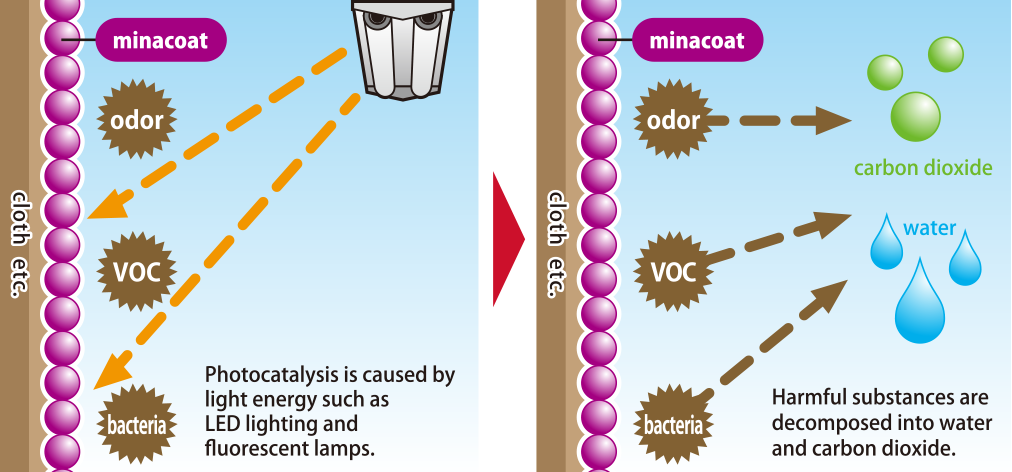

It reacts only to ultraviolet radiation, which contains only 3 to 4% of sunlight.
Since photocatalysts decompose almost all organic substances by OH radicals having strong oxidation power, they cannot be used for fibers, plastics, and paper.


Research and development of photocatalysts that react even with visible light and titanium dioxide coated with apatite, which can be used for textiles, paper, and plastics
Research and development of hybrid photocatalysts that can be fixed without binders by using titanium hydroxide
*binder: adhesive applied before installation as a base

Visible light-activated, binder-less, and apatite-coating properties enable application to any material, achieving extremely high performance in the removal of indoor antiviral, antibacterial, deodorizing, mold-proof, and volatile organic compounds (VOCs).
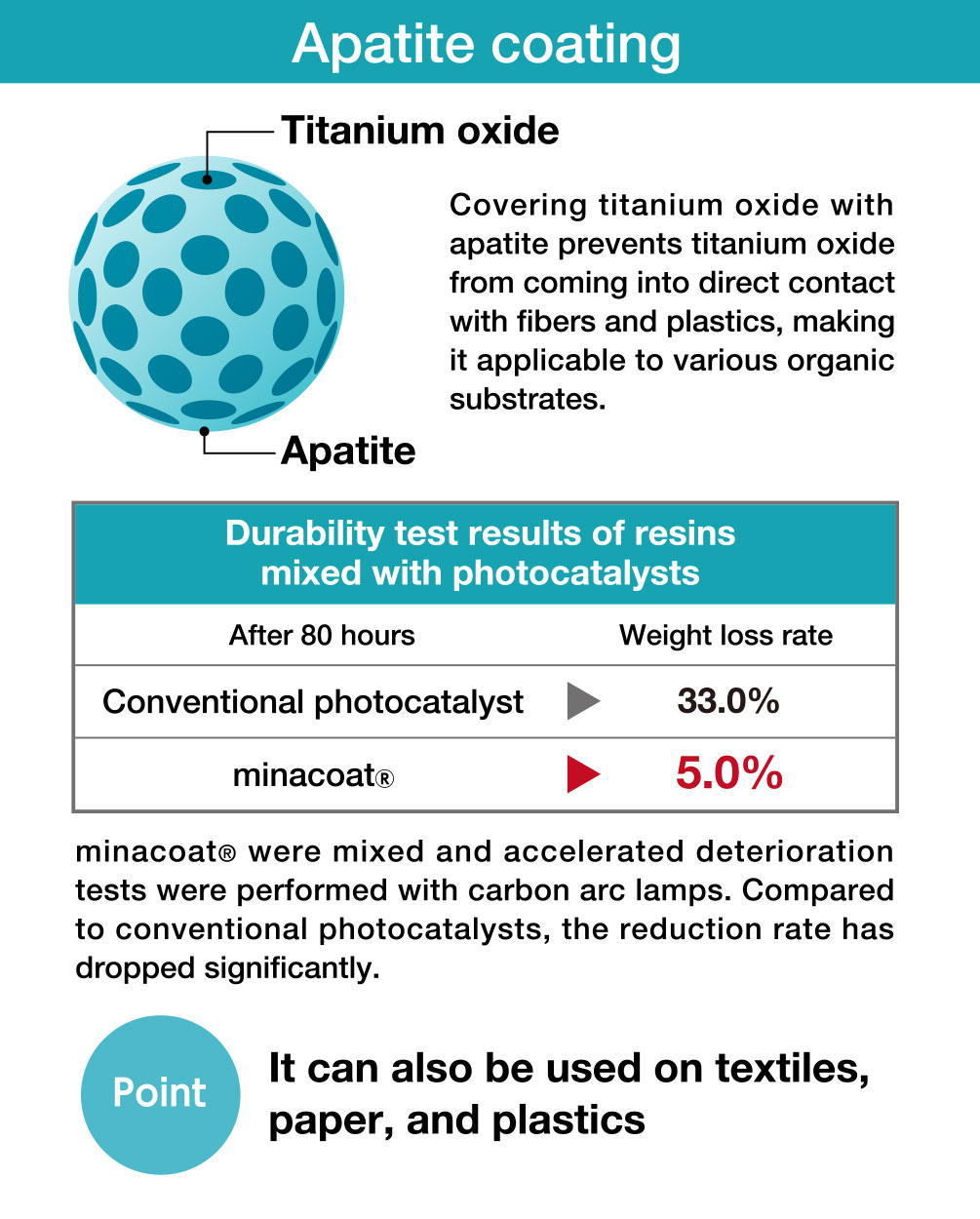


We have conducted some tests at the Japan Textile Products Quality and Technology Center and the Kitasato Research Center for Environmental Science, and demonstrated inactivation of viruses and bacteria such as the new coronavirus (SARS-CoV-2), influenza A virus, feline calicivirus, E. coli, and Staphylococcus aureus.
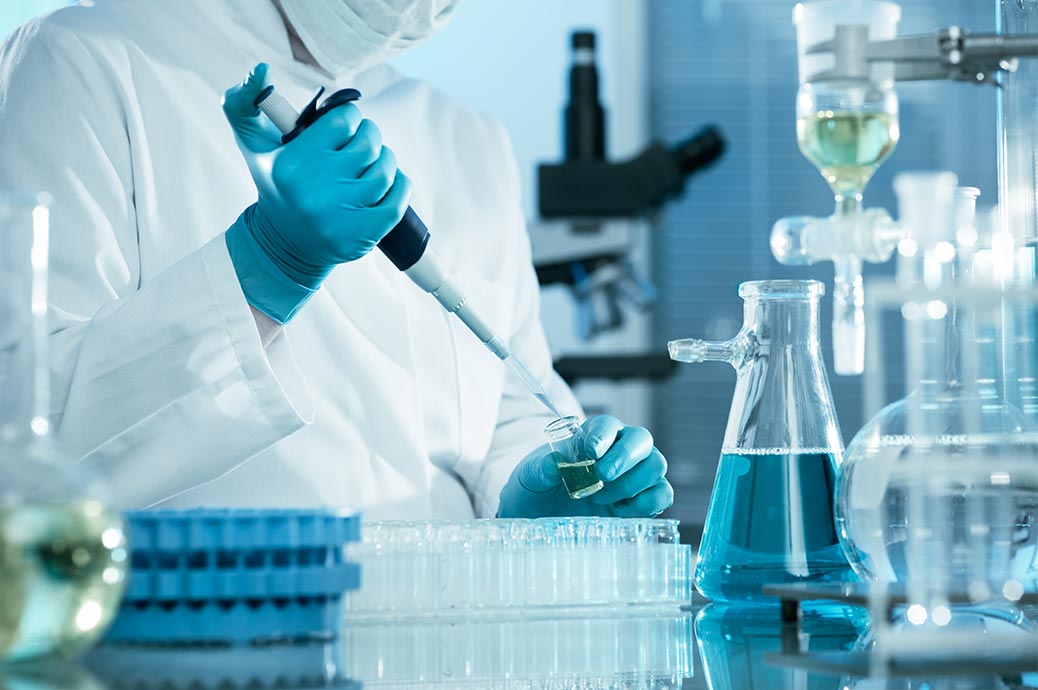
Photocatalysts including minacoatⓇ keep decomposing viruses and bacteria when exposed to light, so unlike alcohol, which only works once, there is no need for repeated disinfection.

minacoatⓇ consists of a visible-light-driven photocatalyst, and that can facilitate photocatalysis with in-house light sources even without sunlight (ultraviolet).

minacoatⓇ decomposes viruses and bacteria by reacting with light without adsorbing them. Competitors' products absorb viruses and bacteria, so viruses and bacteria are attracted to the surface of the mask.
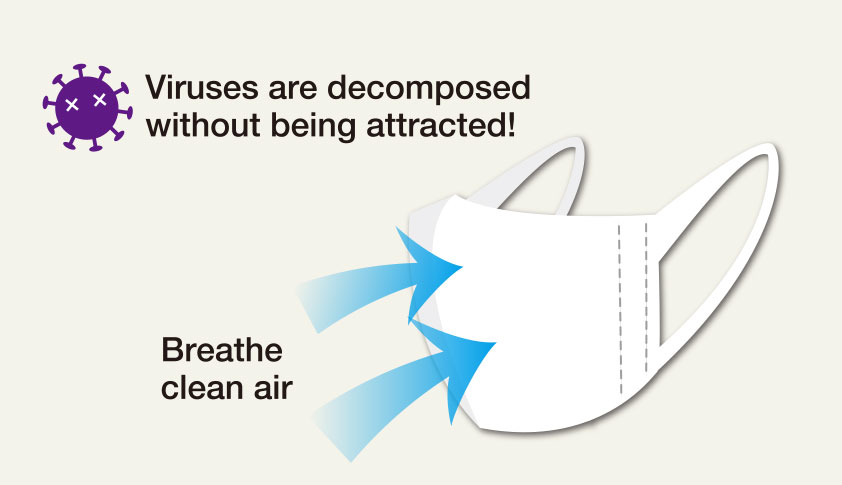
minacoatⓇ is applied in a thin film of less than 1 μm, maximizing its photocatalytic performance. This product can be coated on leather and cloth, which is impossible with competitors' products, and also prevents deterioration caused by ultraviolet rays.


Applying minacoatⓇ to smelly shoe boxes decompose the causative bacteria and eliminate the odors.
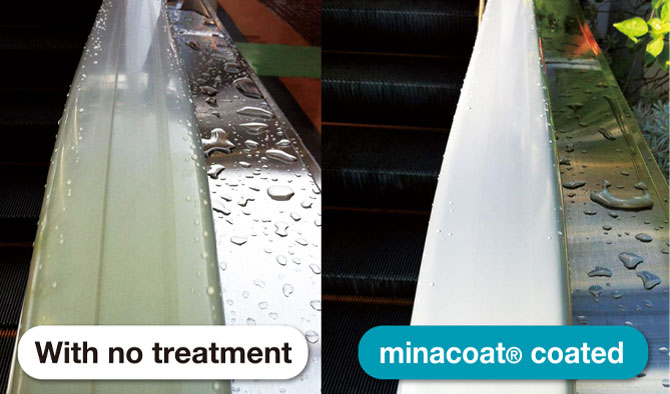
The picture on the right shows the minacoatⓇ coated plastic belt of a new escalator after one month of application. You can tell that the belt is highly stain resistant and remains white.
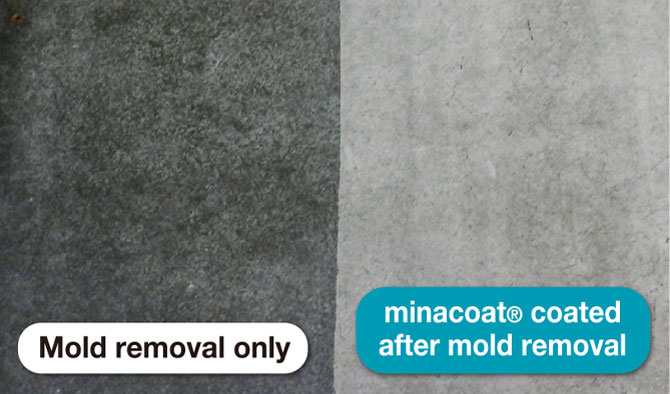
The picture on the right shows the plaster board surface four and a half years after the mold removal. Coating with minacoatⓇ after mold removal will keep it clean.

The new coronavirus (SARs-CoV-2) shared from the National Institute of Infectious Diseases was incubated on a glass piece (25cm2) coated with minacoatⓇ and left under light irradiation (500 Lx) and in the dark for 4 hours before measurement. The table shows the test result.
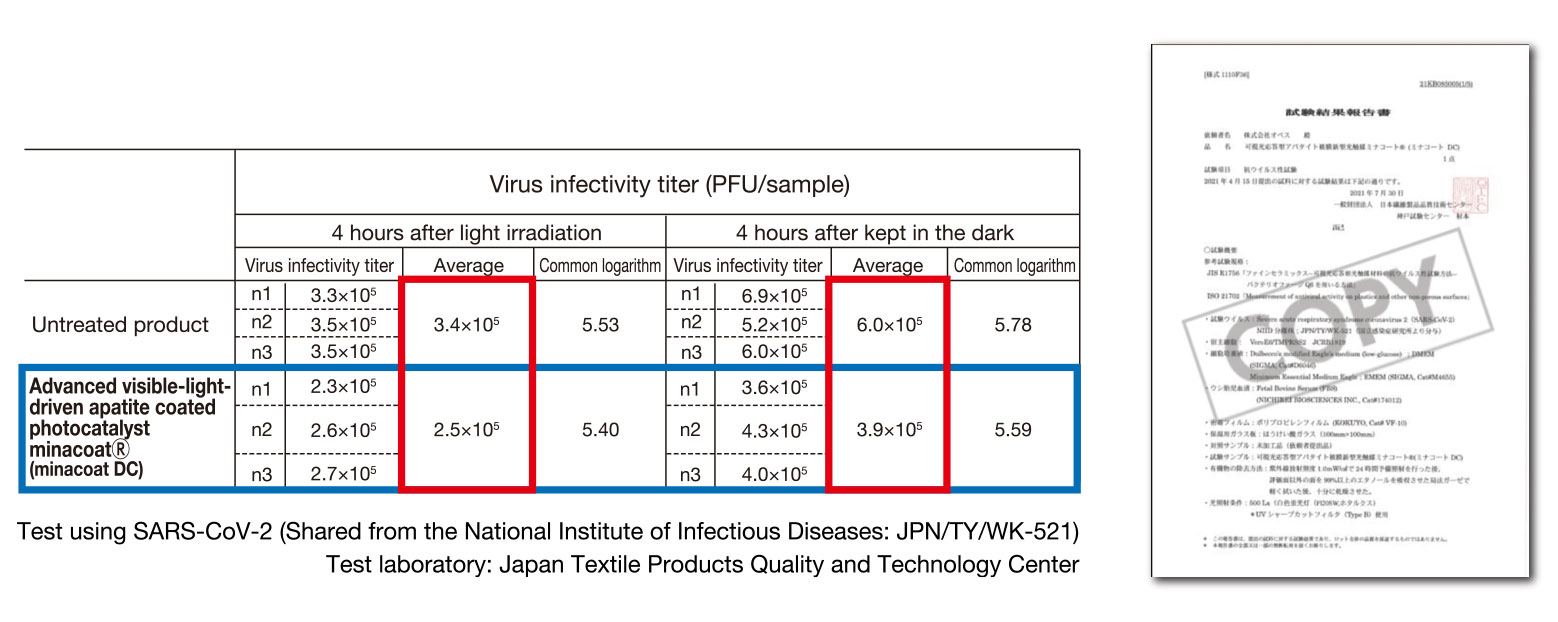


The test was conducted using the new coronavirus shared by the National Institute of Infectious Diseases, rather than an alternative virus. Very few institutions have actually conducted tests with the new coronavirus, but Opeth was one of the pioneers in the industry to conduct the test.
Inactivation of the following viruses and bacteria has also been demonstrated.

Test laboratory: Kitasato Research Center for Environmental Science
In addition to bacteria and viruses, NOx, SOx, and VOC can also be decomposed.
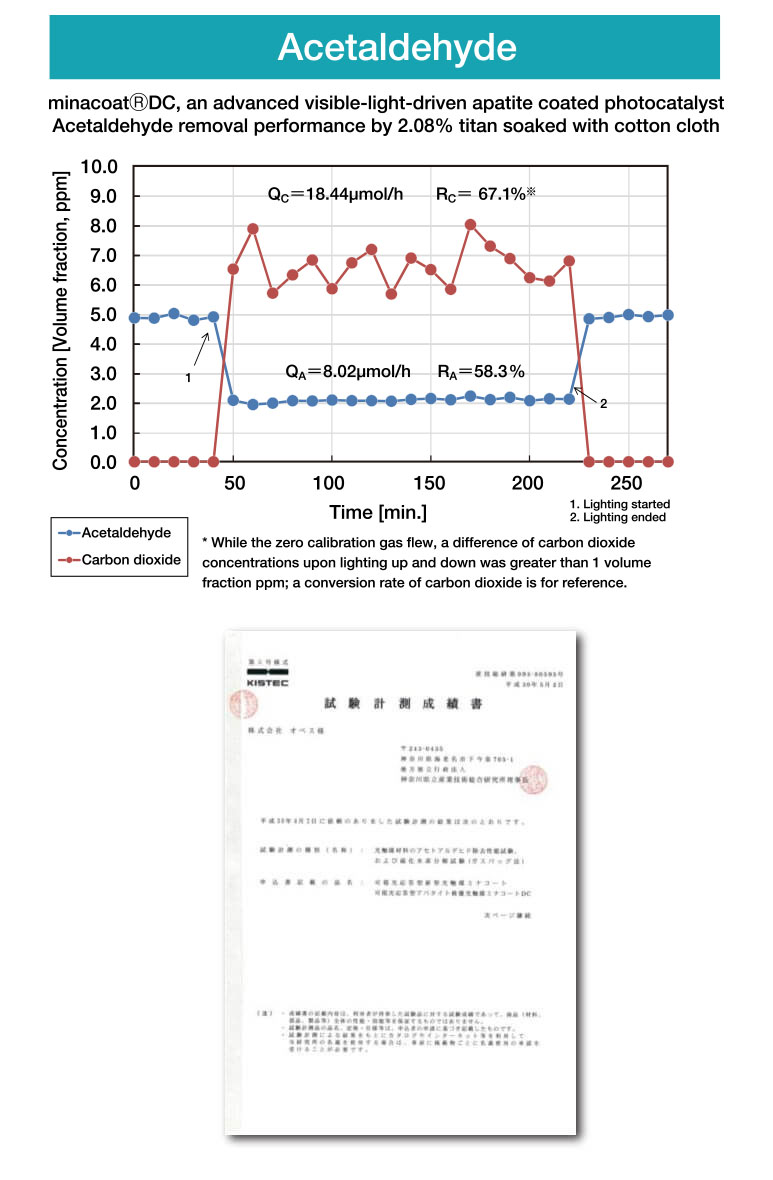
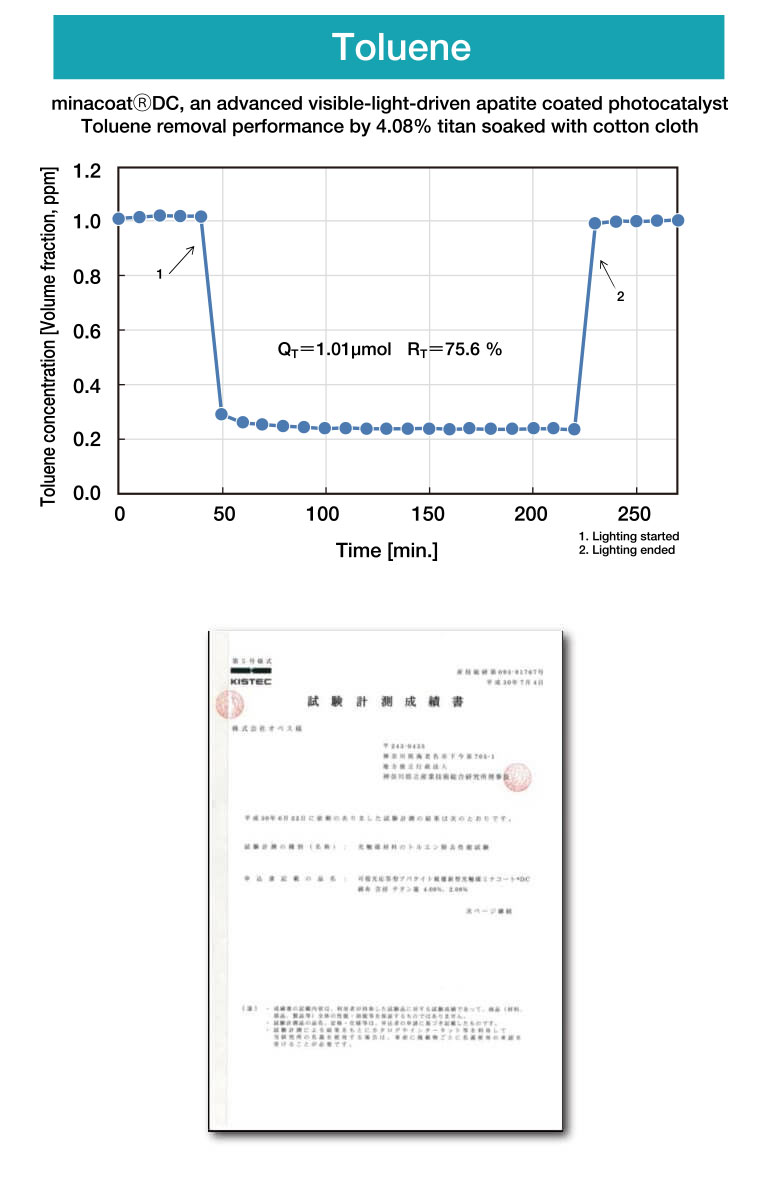
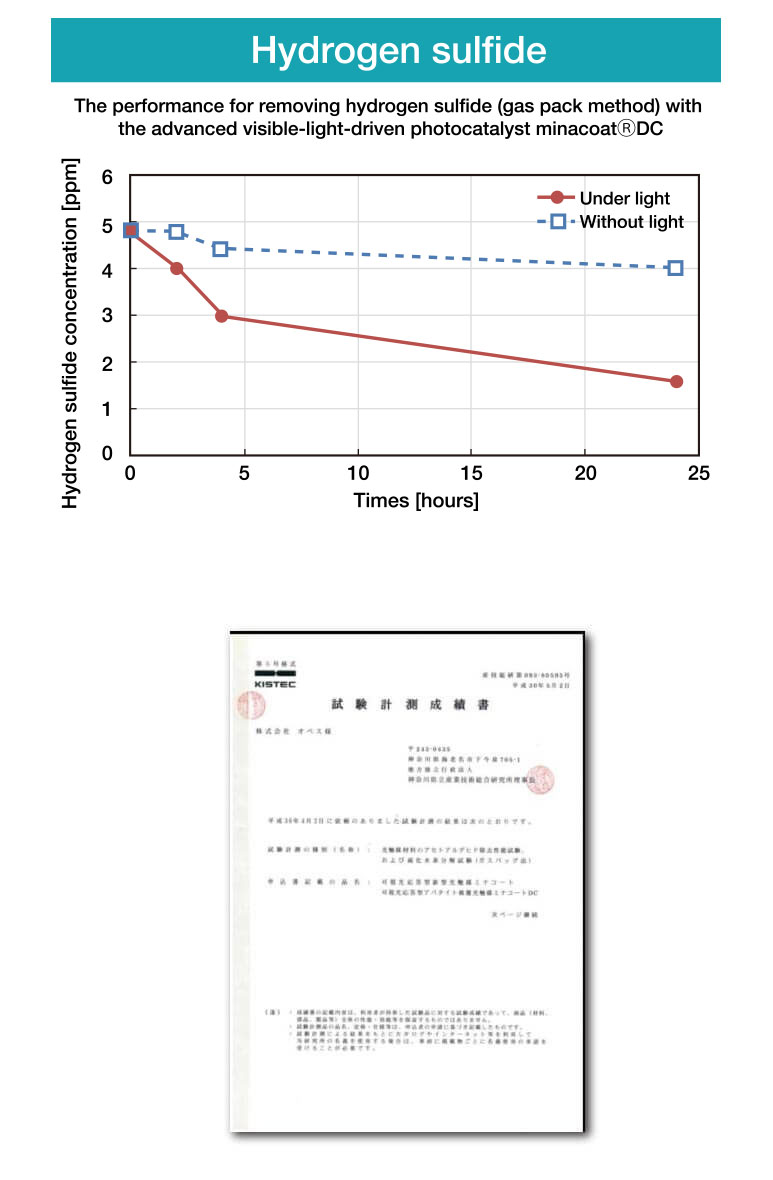
Test laboratory: Kanagawa Institute of Industrial Science and Technology

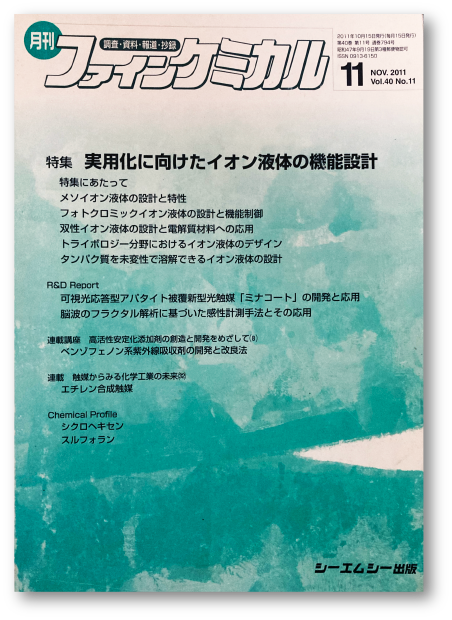
Fine Chemical November number (2011)
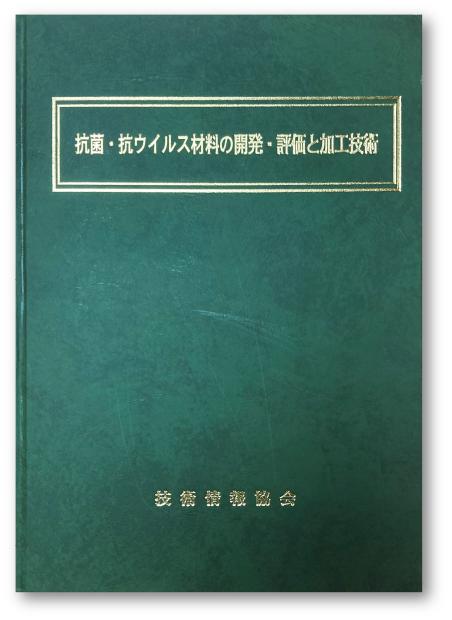
“Development and Evaluation of Antibacterial and Antiviral Materials, and Processing Technology” (2013)

The latest information in simple terms Photocatalysis Experimental Methods (2021)
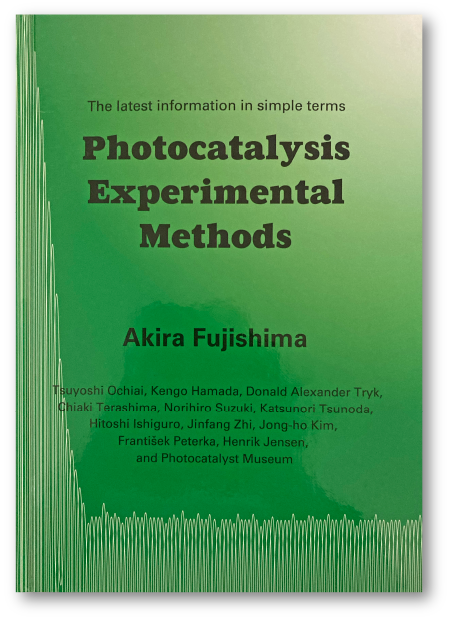
The latest information in simple terms
Photocatalysis Experimental Methods
(2021)
| 2009 | In March 2009, AIST announced that it developed a low-cost, visible-light-driven photocatalyst that can be used for fibers and plastics (patented)–which does not look yellowish, and whose acetaldehyde decomposition performance and antibacterial effect were greatly improved. |
|---|---|
| 2009 | Titanium hydroxide developed by Nagamune Industry Co. in 2009, (patented) played a role of a binder to combine apatite-coated titanium oxides with each other. As a result, a thin film of titanium oxide was evenly formed on the target material to increase the adhesion. This was how minacoatⓇ was born. minacoatⓇ was first released in 2010. First application sites: toilets in JR Tokyo Station and smoking rooms in a plant of Honda Motor Company. *Japanese trademark “ミナコートⓇ " Chinese trademark "美奈力Ⓡ ". |
| 2011 | In August 2011, the advanced photocatalyst minacoatⓇ series was approved under the trial order authorization system of Sagamihara City. In October 2011, the usefulness the advanced photocatalyst minacoatⓇ for avian influenza was announced at the Japanese Society of Animal Hygiene. In November 2011, “Development and application of advanced visible-light-driven apatite-coated photocatalyst minacoatⓇ” was published in Fine Chemical (monthly magazine). |
| 2012 | In February 2012, Opeth was introduced as a supplier in the report on the results of METI's “Project for supporting regional companies in creating innovations.” |
| 2013 | In April 2013, Photocatalysis International Research Center (PIRC) was established in Tokyo University of Science. In October 2013, minacoatⓇ was introduced as the latest technology of visible-light-driven photocatalyst in “Development and Evaluation of Antibacterial and Antiviral Materials, and Processing Technology” published by Technical Information Institute. |
| 2015 | In May 2015, minacoatⓇ was introduced in the report on “antibacterial, mold prevention, and antivirus measures” issued by Toray Research Center, Inc. |
| 2021 | In March 2021, minacoatⓇ appeared in the magazine “The latest information in simple terms Photocatalysis Experimental Methods” published by Kitano Shoten and its English version published in December 2021. |

Even small areas can be covered with photocatalyst by spraying 2.5μm particles with a dedicated atomizer. minacoatⓇ does not contain binders thanks to our special technology, so it does not require curing of glass and can be applied quickly and easily.

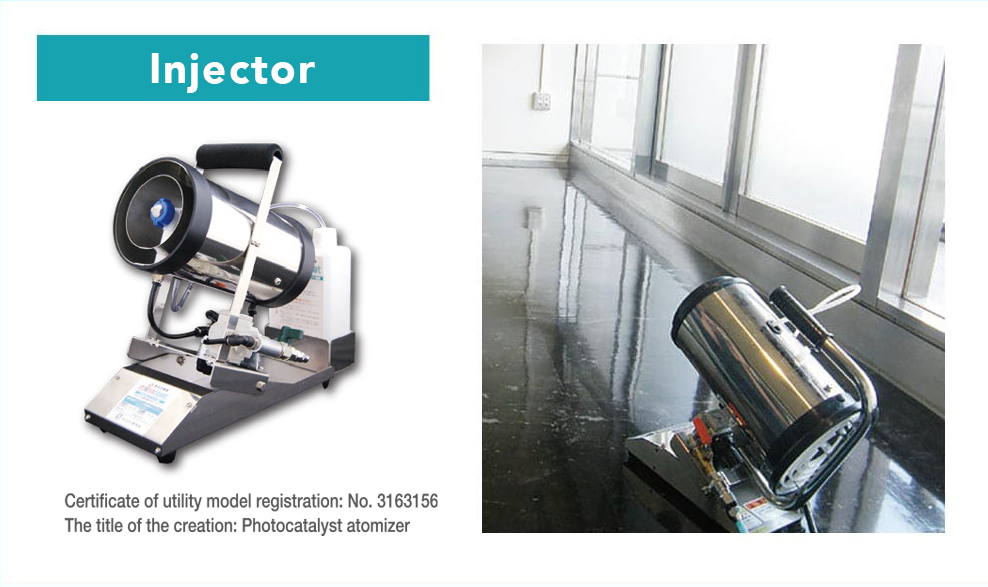

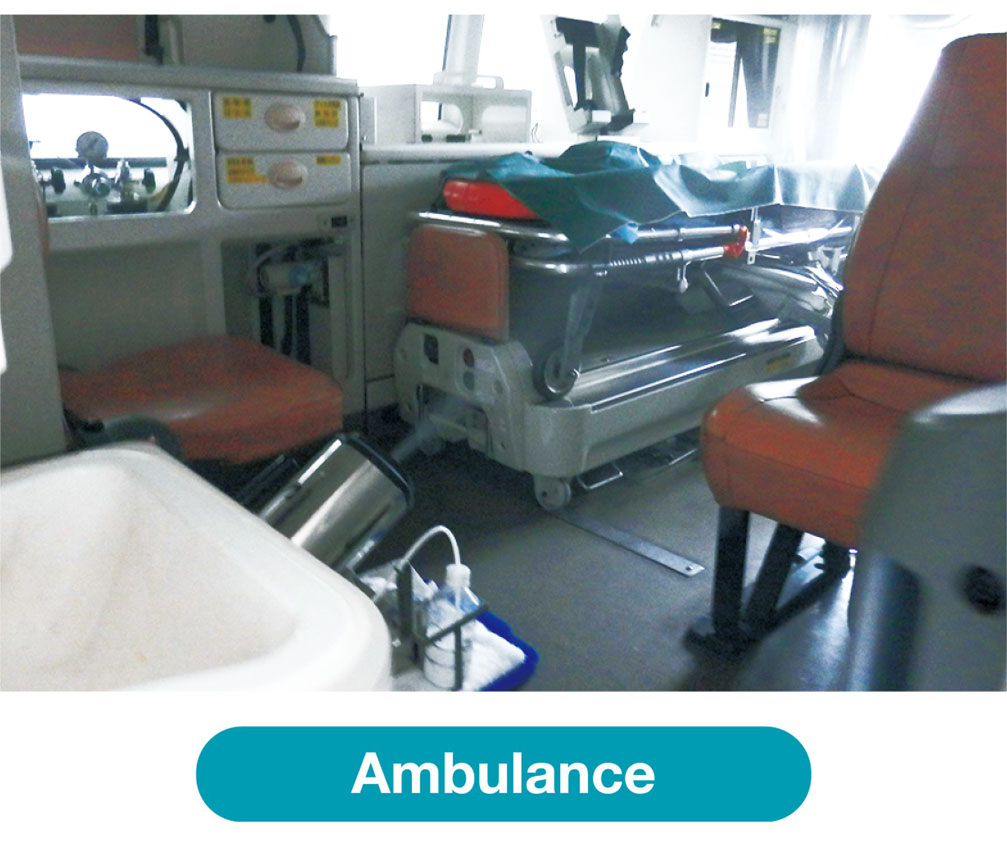

Testing three years and seven months later, the antimicrobial effect remained!
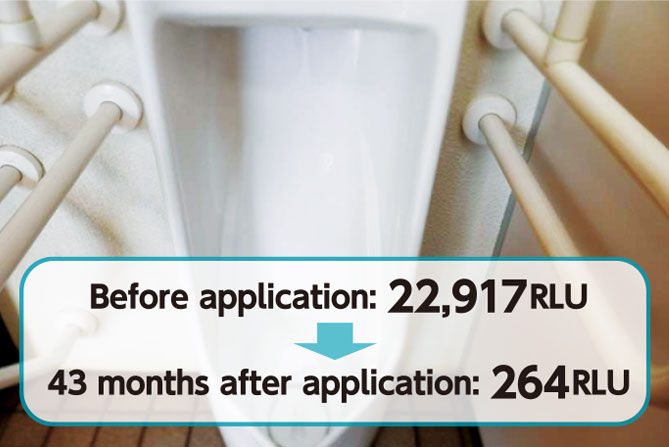

We’ve coated with minacoatⓇ and cleaned with Kabi Knock Power 2.


